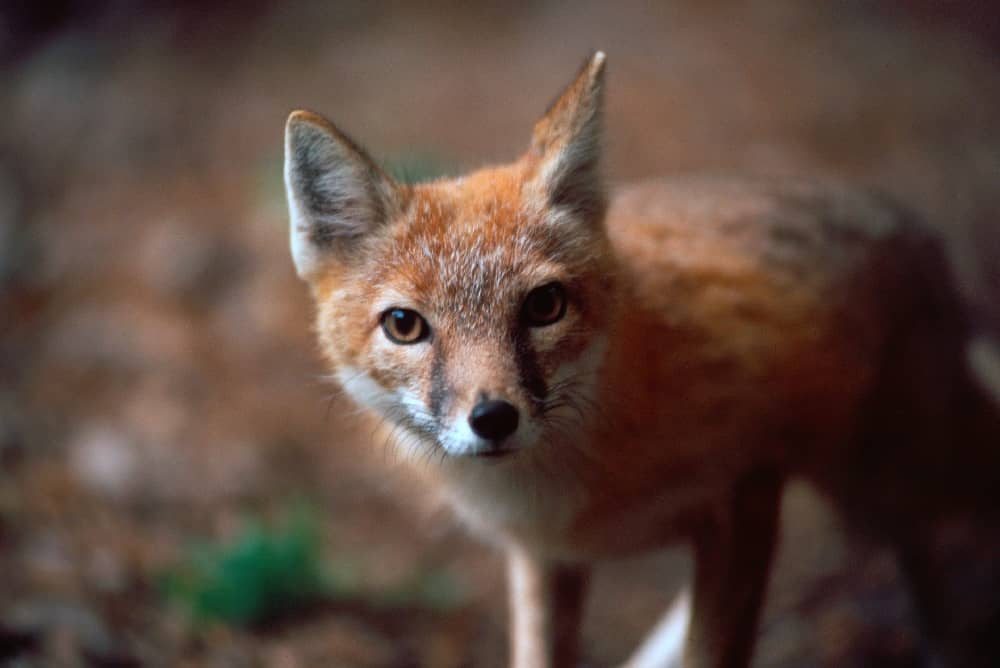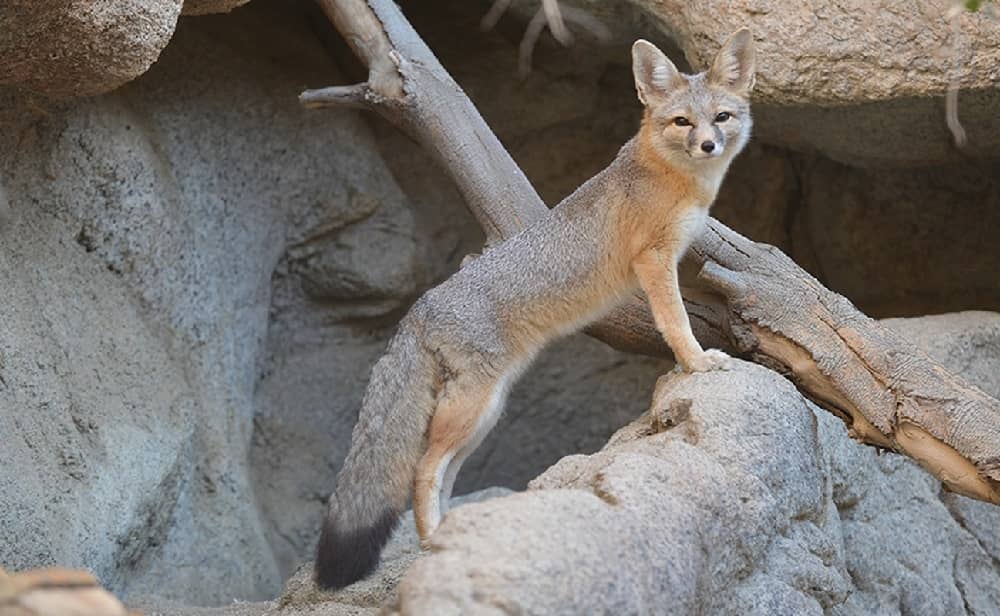The best foxes to keep as pets is a great idea for animal lovers. Foxes are intelligent, quirky, and downright adorable but also wild animals. If you are considering keeping any foxes as a pet, you must know about their habitat and behavior. You should know about the different fox species and the best foxes to keep as pets.
Here are some 10 pet foxes, so that you can understand their domestication and what challenges come with it. These species need careful attention to maintain their diet, their household, etc.
Can You Legally Own a Pet Fox?
To legally own a pet fox at your home, knowing your local laws and regulations is essential. Some states need legal paperwork and authorized permission to keep foxes as pets. However, some states ban foxes as pets or have restrictions on some specific species. Always check your local laws before deciding to bring a fox into your life.
Best Foxes to Keep as Pets
Not all fox species make ideal pets. The foxes that are more commonly kept as pets are either domesticated or naturally have more manageable temperaments. Here are some of the best foxes to keep as pets:
Fennec Fox
- Size: 9-16 inches long and weigh 2-4 pounds.
- Temperament: Energetic, playful, and affectionate
- Lifespan: 10-14 years old.
- Scientific name: Vulpes zerda
- Physical Appearance: Cream and fawn color long and thick hair, hairy feet, very large ears like bats.
Fennec foxes are the world’s smallest species of fox and have a longer life expectancy than any other pet fox species. These are some of the most popular foxes kept as pets in the U.S. because of their small size, big ears, and cute behavior. They are highly social animals. They make bonds with humans very easily and comfortably.
Fennec foxes are one of the best pets because they are small and easily manageable. They are very delicate animals, so you need to be extra protective towards them.

Challenges: Fennec foxes can be hyperactive. If they do not get the right space or stimulation, they may become destructive. Additionally, they can be a bit challenging to potty-train, so expect some accidents in your surroundings.
Red Fox
- Size: 36-42 inches long and weigh 8-15 pounds.
- Temperament: playful, clever, and independent.
- Lifespan: 10-12 years old.
- Scientific name: Vulpes vulpes
- Physical Appearance: long snouts with large ears, red fur over the face, on the tail, on the back sides. Have grayish-white throat and black feet. White fluffy tail.
Red foxes are native to North America, Europe, Asia, and parts of North Africa. They are not your average pets. Red foxes aren’t suitable as they are wild animals with instincts that may not align with typical domestic life. They require a spacious, secure environment to roam and explore, along with mental stimulation and regular socialization to thrive.
Red foxes are playful and intelligent animals, which makes them fun to watch and interact with. If you want a fox larger than a fennec fox but still manageable, you can go for it. They are highly adaptable and enjoy outdoor activities.

Challenges: Red foxes are highly independent and can sometimes be aloof. They have a digging behavior, which they often display as they search for food, create dens, or explore their surroundings. This natural behavior can be challenging for pet owners because these pets can dig in the gardens or lawns, creating mess and damaging your exteriors.
Also, red foxes have a strong, musky odor, particularly from their urine, as they mark their territory with urine. So, it can be difficult to manage in a home environment. They need regular cleaning and proper care to minimize any unpleasant odors.
Arctic Fox
- Size: 28 inches long and weigh 6-10 pounds.
- Temperament: curious, active, and friendly.
- Lifespan: up to 14 years old.
- Scientific name: Vulpes lagopus
- Physical Appearance: thick and white fur in winter. Compact body, short legs, and rounded ears. Bushy tail. Fur changes to a brown or gray tone during summer.
Arctic foxes are native to the Arctic regions of the Northern Hemisphere, including parts of Alaska, Canada, Greenland, Iceland, and northern areas of Russia and Scandinavia. They are a unique species, renowned for their striking white fur that provides excellent insulation against frigid temperatures. They thrive in the Arctic, so they are sensitive to heat. You need to keep them cool or give them cooler temperatures if you are thinking of keeping them as pets.
Many people are drawn to the idea of keeping an Arctic fox as a pet due to their captivating appearance and playful demeanor. They are intelligent animals and can make strong bonds with their owners.

Challenges: However, keeping an Arctic fox as a pet has some significant challenges. Their dietary needs can be complex, as they require a varied diet that mimics their natural hunting patterns, including raw meat, fruits, and vegetables. They are very energetic and need a large space to run and explore.
These foxes are also more vocal than other domestic pets, which can lead to noise issues. They are very similar to red foxes; they also have smelly urine from which they mark their territory.
Silver Fox
- Size: 36-42 inches long and weigh 8-15 pounds.
- Temperament: intelligent, curious, and mischievous
- Lifespan: 10-12 years old.
- Scientific name: Vulpes vulpes
- Physical Appearance: dense fur, silver-gray coat to nearly black. Slender bodies pointed ears, and bushy tails.
The silver fox is primarily found in North America, particularly in the eastern and northern regions of the United States and Canada. They are also present in parts of Europe and Asia. They are very intelligent and social animals with playful personalities. These foxes hunt various prey, including small mammals, birds, and insects, and rely on their senses to navigate their environment. Owners can have them because of their engaging behavior.
They need large spaces to explore, especially outdoor enclosures that can be suitable. Silver foxes have specific dietary needs that may include a variety of meats, fruits, and vegetables, mimicking their natural hunting patterns.

Challenges: While they are engaging animals, they still have some challenges in keeping them as pets. As they are wild animals, they have wild instincts, which can lead to destructive behaviors like digging, chewing, and vocalization. Like other foxes, they also have a musky odor in their urine. They are energic animals that require mental and physical stimulation. Without these, they may become bored and engage in destructive behaviors.
Gray Fox
- Size: 31-45 inches long and weigh 8-14 pounds.
- Temperament: shy, cautious, and playful when comfortable.
- Lifespan: 6-10 years old.
- Scientific name: Urocyon cinereoargenteus
- Physical Appearance: salt-and-pepper gray coat, reddish-brown legs, and white underbelly. Short legs, bushy tail, which has a black stripe running along the top and a black tip. Strong claws and an agile body.
Gray foxes are native to North America, with their range extending from southern Canada down through the eastern and western United States and into Mexico. The trait that makes them different from any other fox species is their ability to climb trees. They are nocturnal and have a diverse diet, which includes small mammals, birds, fruits, and insects.
Gray foxes need ample space to explore and exercise. They are shy but can be friendly and affectionate if properly socialized from a young age.

Bat-eared Fox
- Size: 18-26 inches long and weigh 6-12 pounds.
- Temperament: social, playful, and intelligent
- Lifespan: Up to 13 years old.
- Scientific name: Otocyon megalotis
- Physical Appearance: Large ears, which can grow up to 5 inches long. Light gray or tawny fur, with darker markings around its face, legs, and tail. Slender, agile body with a pointed snout and bushy tail.
Bat-eared foxes are native to the savannas, grasslands, and arid regions of eastern and southern Africa. Their range includes countries such as Namibia, Botswana, South Africa, Tanzania, Kenya, and parts of Zambia.
They are very fascinating animals. Their diet should include a variety of proteins, primarily insects like crickets and mealworms. Their enclosure should be escape-proof. Proper socialization from a young age is crucial for developing a well-adjusted pet.

Challenges: In many regions, there are some legal restrictions to owning a bat-eared fox, or you may require special permits. You need to research local laws before getting one. Like other foxes, they create vocalizations and mark their territory with their urine, which has a strong odor.
Swift Fox
- Size: 31 inches long and weigh 4-7 pounds.
- Temperament: Fast, alert, and sometimes shy.
- Lifespan: Up to 10 years old.
- Scientific name: Vulpes velox
- Physical Appearance: Light orange-tan coat, with a pale underside and distinct black patches around its nose. Large ears, bushy tail, and compact body.
Swift foxes are native to the grasslands and plains of North America. Their range extended from the Great Plains, particularly in areas of Canada, the United States, and northern Mexico. They are commonly found in states such as Colorado, Kansas, Nebraska, and Wyoming. Their populations have been impacted by habitat loss and fragmentation, but conservation efforts have been implemented to help restore their numbers in certain regions.
Swift foxes can run up to 25 miles per hour and are primarily nocturnal hunters, preying on small mammals, birds, insects, and plants. Swift foxes require plenty of space to roam and explore.

Challenge: Keeping swift foxes as pets may have some challenges. They are naturally wild and have strong instincts, which means they love to dig and explore, which leads to mess around your home.
They require plenty of space to run and play, so small environments are not suitable for them. Swift foxes can be quite vocal, especially at night, which might disturb you. Finding a veterinarian who understands exotic pets can also be tricky. And because of their strong, musky odor, it might be challenging.
Corsac Fox
- Size: 19-24 inches long and weigh 6 pounds.
- Temperament: gentle, quiet, and curious.
- Lifespan: 9-13 years old.
- Scientific name: Vulpes corsac
- Physical Appearance: Soft, thick coat that varies from grayish-yellow to light brown, large ears, and pointed snout. Long and bushy tail.
Corsac foxes are native to the central Asian steppes and deserts, including regions in Kazakhstan, Mongolia, Uzbekistan, Turkmenistan, and parts of Russia and northern China. They are highly adapted to harsh environments and able to survive with minimal water and food for extended periods.
Corsac foxes are nocturnal, spending their nights hunting small mammals, birds, and insects. Corsac foxes are active creatures that need plenty of room to explore and roam. As pets, they need a balanced diet, so you need to take care of their varied diet of proteins, fruits, and vegetables to stay healthy.

Challenges: Keeping corsac foxes as pets can be a challenging task as they are wild, so they have some wild instincts, which makes them difficult to manage in a home environment. They need a lot of space to run and stay active, and without it, they may become bored and destructive. They take time to form bonds and trust with humans.
Their strong, musky odor and the need for specialized vet care make them hard to care for. Owning a corsac fox requires patience, space, and a lot of commitment.
Pale Fox
- Size: 15-17 inches long and weigh 4-6 pounds.
- Temperament: shy, alert, and nocturnal.
- Lifespan: The average lifespan is generally not longer than 10 years in captivity.
- Scientific name: Vulpes pallida
- Physical Appearance: light, sandy-colored coat, soft and short pale yellow to light gray fur, with a white underside. Large ears, a long bushy tail with a dark tip, and a pointed face.
Pale foxes are native to the Sahel region of northern Africa, which spans from Senegal to Sudan in the east. They inhabit semi-arid and arid environments, including deserts and savannas, where they are well-adapted to survive with limited water and extreme temperatures. They are mainly found in countries like Mali, Niger, Chad, and Mauritania.
Pale foxes are shy and nocturnal, which means they might not be as social or interactive as typical pets. They prefer being active at night and may be elusive during the day. They require a large and secure enclosure that mimics their natural desert habitat.

Challenges: There are several challenges to keeping pale foxes as pets at your home. Since they are wild animals, they have strong instincts like digging and foraging, which can lead to destructive behavior in your home. They also need a lot of space to roam because they are not suited for small environments.
They are nocturnal, meaning they are active at night, which might not fit well with your routine. Like other foxes, they do have a strong odor, which can become problematic.
Kit Fox
- Size: 12-20 inches long and weigh 3-6 pounds.
- Temperament: Skittish but curious and independent.
- Lifespan: 5-12 years old.
- Scientific name: Vulpes macrotis
- Physical Appearance: Slender body, large ears, and a bushy tail. Pale gray or tan coat, large ears with black-tipped tail.
Kit foxes are native to the Southwest United States and parts of northern and central Mexico. They are commonly found in desert and semi-arid regions, such as the Great Basin, Mojave Desert, and Sonoran Desert, where they have adapted to survive in hot, dry environments.
Their range includes states like California, Nevada, Arizona, New Mexico, and Texas. They are nocturnal hunters, feeding primarily on small mammals like rodents, insects, and reptiles. Their special ability to go long periods without water is a testament to their survival skills in harsh conditions. They have a specific, high-quality protein with a balance of fruits and vegetables that are necessary for them.

Challenges: Kit foxes are skittish and tend to be independent. They might not bond with humans in the way domesticated pets do. Their nocturnal nature means they are more active at night, which can be challenging for some pet owners. Kit foxes are best admired for their wild beauty rather than being kept as pets. Their strong odor and wild instincts are also challenging.
Some Careful Tips to Own a Best Fox?
Foxes are very unique and fascinating pets, but they are not suitable for everyone. There are some important considerations that you need to take care of to maintain the habitat, environment, and health and mimic the natural behavior of your pet fox. Here are some careful tips:
Special Diet:
Foxes have specific dietary needs that are different from domestic dogs or cats. You will need to provide a balanced diet that includes raw meat, high-quality protein, and vitamins to your pet fox.
Housing:
Foxes are natural hunters and can escape from enclosures. You should ensure that the enclosure is escape-proof and highly secure. An outdoor area is suitable for the enclosure where they can run and play. Indoor foxes can be destructive if not given enough attention or stimulation.
Socialization:
Foxes are social animals but don’t always interact like domesticated pets. While some species bond with their owners, they may not be as loyal or obedient as dogs. You need to socialize with your pet fox at a young age.
Vet Care:
Finding a veterinarian who is experienced with exotic species of foxes can be difficult. You need to ensure that your local vet is comfortable treating a fox or be prepared to travel to find specialized care.
Time Commitment:
Foxes are not low-maintenance pets. They require a lot of attention, exercise, patience, and interaction to keep them healthy and happy. If you are ready to commit your time to your pet foxes, they will make very engaging pets.

Frequently Asked Questions
Question 1: Are foxes legal to keep as pets?
Answer: The legality of keeping a fox as a pet varies by state and country. Some places require special permits, while others may prohibit ownership entirely. Always check local regulations before considering a fox as a pet.
Question 2: Do foxes make good pets?
Answer: While foxes can be charming and playful, they are still wild animals and may not behave like typical pets. They require a lot of time, space, and attention, and they may not form strong bonds with humans like domesticated animals do.
Question 3: What are the challenges of keeping a fox as a pet?
Answer: Foxes have a strong wild instinct, strong odor, and difficulty in raising them in small houses.
Question 4: What do foxes eat?
Answer: Foxes require a specialized diet that mimics their natural food sources, which include small mammals, insects, and fruits & vegetables. It’s essential to provide a balanced diet to ensure their health.
Question 5: Can foxes be trained?
Answer: Foxes can learn some basic commands and tricks, but they are not as easily trainable as dogs. Their wild instincts can make them unpredictable and less responsive to training.
Question 6: What is the average lifespan of a pet fox?
Answer: The average lifespan of a pet fox is from 3 to 14 years, depending on the species, genetics, and care provided. With proper care, they can be long-lived companions.
Question 7: Where can I find a fox to adopt?
Answer: If you are thinking of owning a pet pox, look for some reputable breeders or rescue organizations that specialize in exotic animals. You should ensure that they follow ethical breeding practices and provide proper care for their animals.
Conclusion
Deciding to have a fox as a pet is a great commitment. Foxes can be wonderful companions; however, they are still untamed creatures that have different requirements in comparison to domestic animals. Each species, be it a lively Red Fox or a fascinating Arctic Fox, carries different advantages as well as disadvantages. You need to ensure that you can satisfy all the needs of your pet fox, such as space, diet, and understanding of their natural behaviors. The foxes can be purchased from a reputed breeder.
In conclusion, it is a very big privilege to have them and give proper access to all their requirements. If you are ready to make them meet all their specific needs, these creatures can become an important part of your life.


